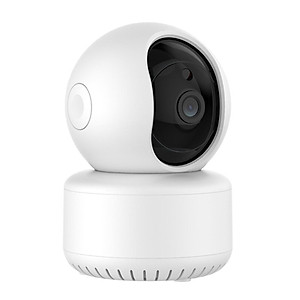As the smart home revolution continues to gain momentum, the integration of various devices to create a seamless and secure living environment is becoming increasingly important. One critical aspect of this integration is ensuring that your CCTV systems are compatible with smart home devices and systems. This compatibility not only enhances the security of your home but also adds convenience and efficiency to your daily life. Let’s explore how you can ensure your CCTV systems are up to the task.
Understanding Compatibility
Compatibility between CCTV systems and smart home devices means that these systems can communicate and work together without issues. This integration allows for a more cohesive security strategy, where different devices can trigger each other, share information, and be controlled through a single interface.
Key Benefits of Integrating CCTV with Smart Home Systems
- Enhanced Security: By integrating CCTV systems with smart home devices such as motion sensors, door locks, and alarms, you create a more robust security network. For example, a smart lock can trigger the CCTV camera to start recording when the door is opened.
- Remote Monitoring and Control: Integration allows you to monitor your CCTV footage and control other smart home devices remotely using a smartphone app. This means you can check your home’s security status from anywhere in the world.
- Automated Responses: Smart home systems can be programmed to respond automatically to certain events. For instance, if your CCTV detects motion, it can turn on smart lights or alert you via a smartphone notification.
- Simplified Management: Instead of managing multiple systems separately, integration allows you to control everything from a single app or interface, simplifying the user experience.
Checking Compatibility
To ensure your CCTV systems are compatible with smart home devices, consider the following factors:
- Communication Protocols: Most smart home devices use specific communication protocols such as Wi-Fi, Zigbee, or Z-Wave. Ensure your CCTV system supports these protocols or can be connected through a compatible hub.
- Software and App Integration: Check if your CCTV system can be integrated with popular smart home platforms like Amazon Alexa, Google Home, or Apple HomeKit. Many modern CCTV systems come with their own apps that support these integrations.
- Firmware Updates: Ensure that your CCTV system supports firmware updates. This is important as manufacturers often release updates that improve compatibility with other smart home devices and fix security vulnerabilities.
- Open APIs: Some CCTV systems offer open APIs (Application Programming Interfaces) that allow for custom integrations. This can be particularly useful if you have a mix of devices from different manufacturers.
- User Reviews and Support: Look for user reviews and support documentation that specifically mention smart home integration. This can provide insight into real-world compatibility and potential issues.
Choosing the Right System
When selecting a CCTV system for a smart home, prioritize systems known for their compatibility and ease of integration. Some popular options include:
- Nest Cam: Known for its seamless integration with Google Home.
- Ring: Works well with Amazon Alexa and offers a wide range of security devices.
- Arlo: Compatible with both Alexa and Google Home, offering flexibility and advanced features.
Conclusion
Ensuring that your CCTV systems are compatible with smart home devices and systems is crucial for building a secure, efficient, and convenient home environment. By paying attention to communication protocols, software integration, firmware updates, open APIs, and user reviews, you can select and set up a system that meets your needs. Embrace the smart home revolution and enjoy the peace of mind that comes with an integrated security system.






Comments